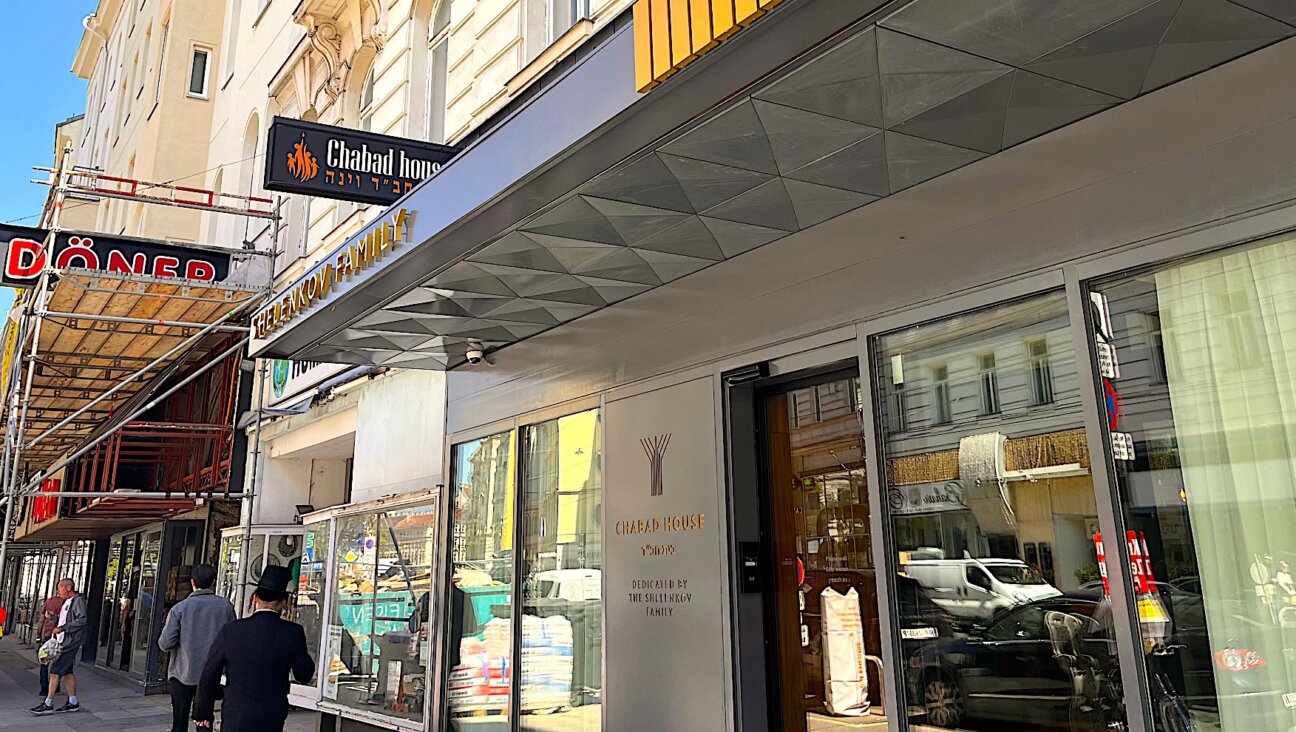ווידעאָ: אַ ייִדישער קאַובוי־פֿילם וועגן רויבערײַען און אַ מאַמעס ליבעWATCH: A Yiddish cowboy film about robberies and a mother’s love
„שאַטגאָן־מירעלע“ ראַטעוועט איר זון און פֿאַרטרײַבט די גזלנים מיט איר שרויטביקס.

Graphic by Angelie Zaslavsky
מיט אפֿשר 15 יאָר צוריק האָב איך געזען אויף דער טעלעוויזיע אַ דאָקומענטאַר־פֿילם וועגן דער געשיכטע פֿונעם ייִדישן קינאָ מיטן נאָמען „מאַנדלען מיט ראָזשינקעס“. אינעם פֿילם, וואָס מע האָט אַרויסגעלאָזט אין 1984, גיט מען איבער די געשיכטע פֿונעם אַמעריקאַנער ייִדישן קינאָ און מע ווײַזט אויסצוגן פֿון פֿאַרשידענע מוסטערן דערפֿון. דער נאַראַטאָר פֿונעם דאָקומענטאַר איז ניט מער און ניט ווייניקער ווי דער גרויסער רעזשיסאָר און פֿילמשטערן אָרסאָן וועלס.
אין „מאַנדלען מיט ראָזשינקעס“ דערמאָנט מען, אַז מע האָט „אַפֿילו געשאַפֿן אַ קאַובוי־פֿילם“ אויף ייִדיש. מע ווײַזט אַ סצענע, אין וועלכער די העלדין, „שאַטגאָן־מירעלע“, פֿאַרטרײַבט פֿון איר שענק צענדליקער מענער מיט איר שרויטביקס און די ווערטער „אַוועק מיט די לאַפּעס“, וואָס דאָס מיינט דאָ , אַ פּנים, „לאָז אים געמאַך“.
פֿאַרשטייט זיך, אַז איך האָב פֿון דעמאָלט אָן זייער געוואָלט זען דעם מאָדנעם פֿילם, וואָס הייסט פּשוט „דער קאַובוי“.
די וואָך האָט דער „מוזיי פֿונעם ייִדישן טעאַטער“ אַרויפֿגעשטעלט דעם פֿילם אויף זײַן יוטוב־קאַנאַל. כאָטש אָרסאָן וועלס דערקלערט אין „מאַנדלען מיט ראָזשינקעס“, אַז מע האָט דעם פֿילם געמאַכט אין די 1930ער יאָרן (”נאָך 40 יאָר פֿאַר Blazzing Saddles“, וואָס דאָס וואָלט געווען אַרום 1934), איז דאָס ניט ריכטיק. אין דער אמתן האָט מען געמאַכט „דער קאַובוי“ אין 1968 ווי אַ פּאַראָדיע. מע האָט גענומען אויסשניטן פֿון אַ פֿריִערדיקן פֿילם, „דער זון פֿון אָקלאַהאָמאַ“ (1932), זיי צונויפֿגעשטעלט און אונטערגערעדט נײַע רעפּליקן אויף מאַמע־לשון. צום פֿילם האָט מען אויך צוגעגעבן מוזיק, אַרײַנגערעכנט די רעפֿרענען פֿון אַזעלכע לידער ווי „ראָזשינקעס מיט מאַנדלען“, „אויפֿן פּריפּעטשיק“ און „אַ ייִדישע מאַמע“, ווי אויך אַ נאַראַטאָר, וואָס מאַכט חוזק פֿון דעם, וואָס קומט פֿאָר אינעם פֿילם.
„דער קאַובוי“ איז פֿול מיט באַטעמטע רעפּליקן. צווישן זיי זענען אַזעלכע פּערל ווי „אַ געמיינער פּאַסקודניאַק פֿאַרגנבֿעט זיך ערגעץ“ און „מע לויפֿט. מע גאַלאָפּירט. אַהין און אַהער. וואָס האָבן זיי מורא? וואָס יאָגן זיי זיך? זיי וועלן פֿאַרשפּעטיקן צו מינחה?“





















